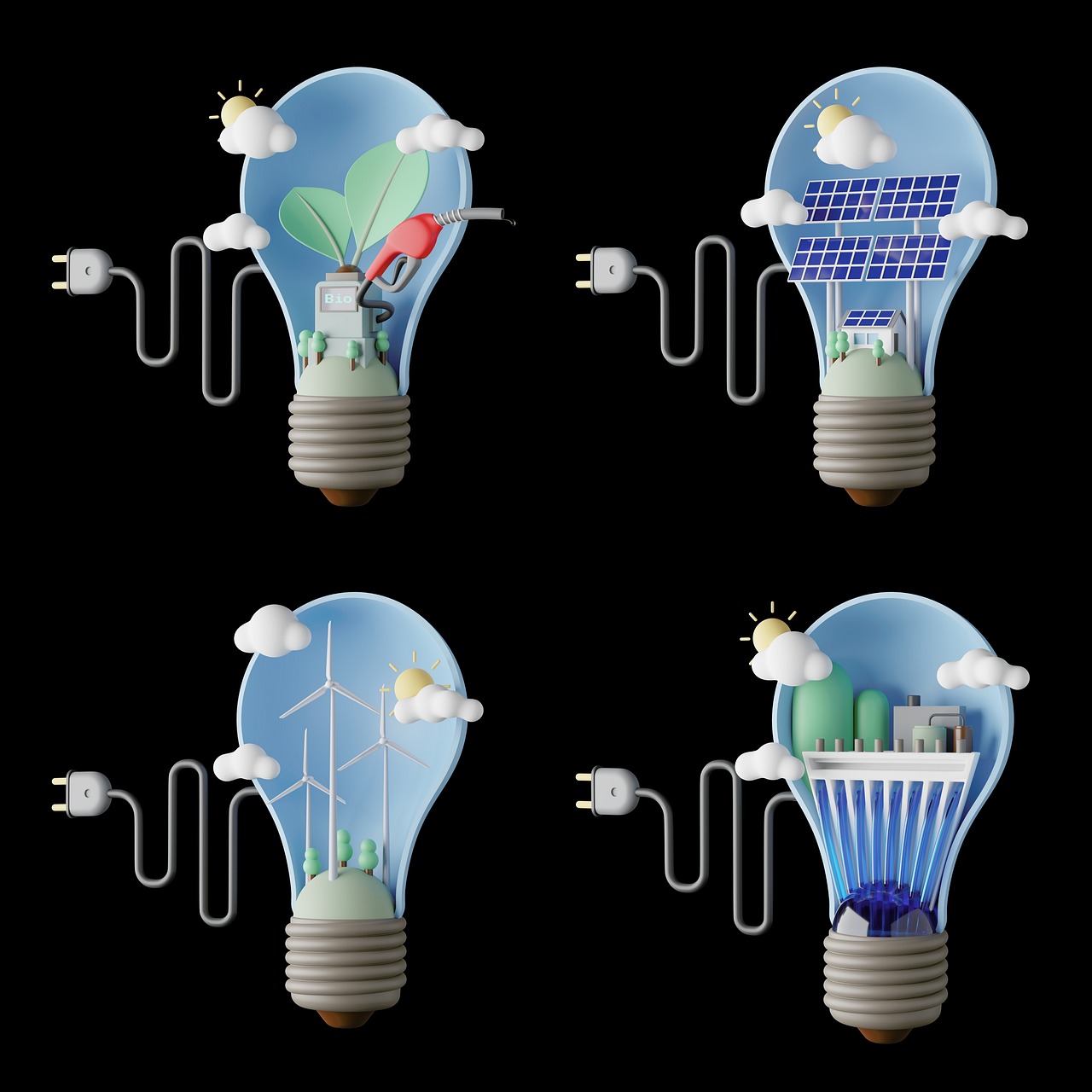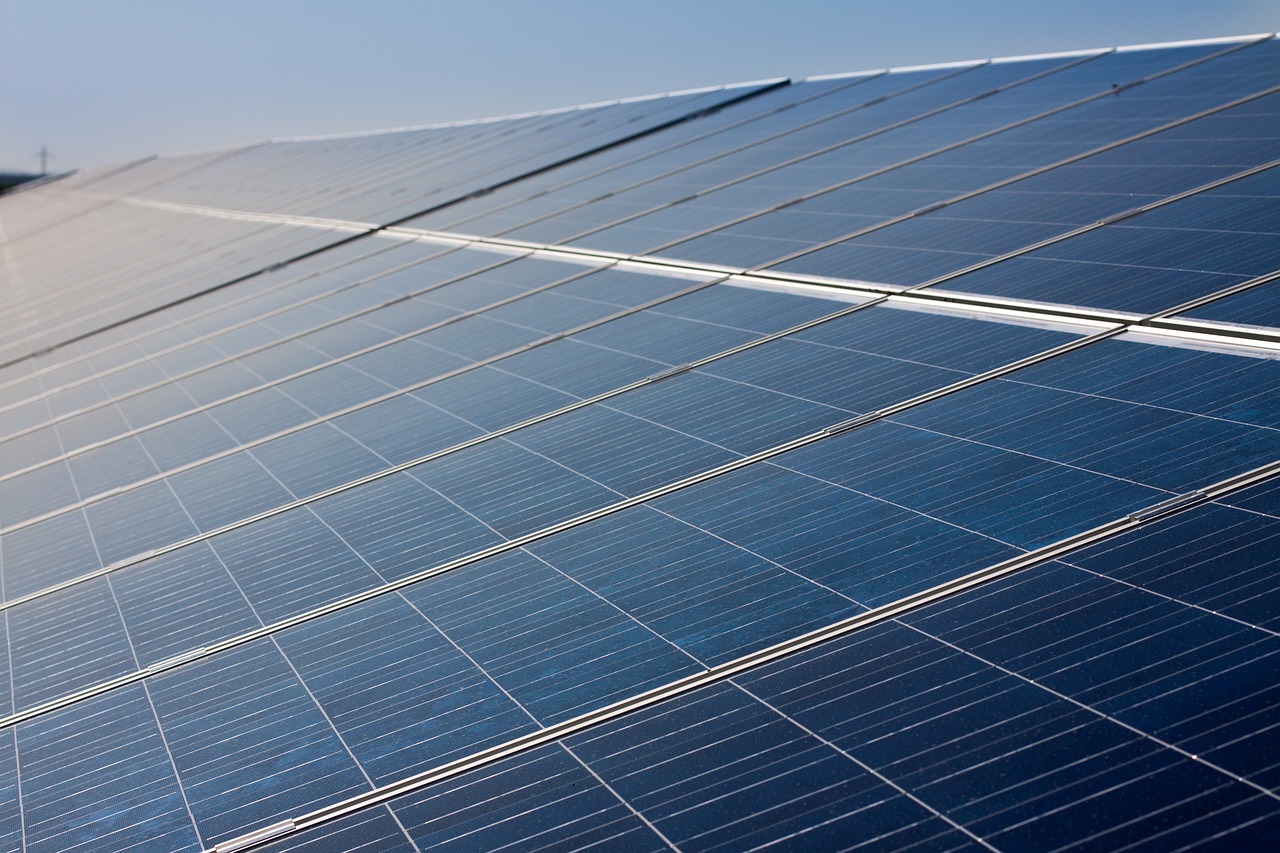Should You Invest in a Green Energy Start-Up?
Investing in a green energy start-up might sound like a modern-day treasure hunt, filled with the promise of sustainable riches and a chance to save the planet. But before you dive in headfirst, it’s crucial to understand the landscape. The world is shifting towards renewable energy sources, and with that shift comes a wave of innovative companies eager to make their mark. However, just like any investment, there are both opportunities and risks involved. So, should you take the plunge? Let’s explore what’s at stake.
Green energy encompasses a variety of renewable sources, including solar, wind, hydroelectric, and geothermal power. These alternatives are not just buzzwords; they are essential components in the fight against climate change. As the world grapples with the consequences of fossil fuel dependency, the demand for cleaner energy solutions is skyrocketing. This growing awareness creates a fertile ground for investment in start-ups that are pioneering these technologies.
But it’s not just about the feel-good factor of saving the planet. The financial potential is also enticing. The green energy market is projected to grow significantly in the coming years. According to recent studies, the global renewable energy market could reach over $2 trillion by 2025. This trend presents unique investment opportunities for those willing to navigate the complexities of the start-up ecosystem.
However, let’s not sugarcoat it; investing in start-ups is inherently risky. Many start-ups face challenges such as market volatility, competition from established players, and the constant need for innovation. It’s like navigating a ship through turbulent waters; while the destination may be promising, the journey can be fraught with obstacles. Therefore, it’s essential to conduct thorough research and understand the specific dynamics at play in the green energy sector before making any commitments.
In the following sections, we’ll delve deeper into the market trends, government incentives, and the technological innovations driving this sector. We’ll also explore the risks involved in investing in start-ups and how to assess their financial stability. By the end of this article, you’ll have a clearer picture of whether investing in a green energy start-up is the right move for you.
- What are green energy start-ups? Green energy start-ups are companies focused on developing and implementing renewable energy solutions, such as solar panels, wind turbines, and energy storage technologies.
- What are the benefits of investing in green energy? Benefits include potential financial returns, contributing to environmental sustainability, and taking advantage of government incentives.
- What risks should I be aware of? Risks include market volatility, competition, and the financial instability of start-ups.
- How can I assess a green energy start-up before investing? Look at their business model, financial health, market position, and the technology they are developing.

Understanding Green Energy
Green energy refers to energy derived from natural sources that are replenished at a faster rate than they are consumed. This includes sources such as solar, wind, hydroelectric, geothermal, and biomass. The significance of green energy cannot be overstated, especially in the ongoing battle against climate change. As global temperatures rise and environmental concerns mount, the transition from fossil fuels to renewable energy sources is becoming increasingly critical.
One of the most appealing aspects of green energy is its potential to reduce greenhouse gas emissions, which are a major contributor to global warming. For instance, switching to solar or wind energy can significantly lower carbon footprints, making both individuals and businesses more environmentally friendly. Additionally, the green energy sector is not just about saving the planet; it is also about creating new job opportunities and driving economic growth. In fact, the renewable energy sector has been one of the fastest-growing job markets in recent years, with millions of jobs created globally.
Moreover, the importance of green energy is amplified by the increasing public awareness regarding environmental issues. People are more conscious than ever about their energy consumption and are actively seeking ways to reduce their impact on the planet. This shift in consumer behavior has opened up numerous opportunities for innovation and investment in green technologies.
Here’s a quick overview of the various sources of green energy:
- Solar Energy: Harnessed from sunlight using solar panels.
- Wind Energy: Generated by wind turbines that convert wind's kinetic energy into electricity.
- Hydroelectric Energy: Produced from the flow of water, typically through dams.
- Geothermal Energy: Utilizes heat from beneath the Earth's surface.
- Biomass Energy: Comes from organic materials, such as plant and animal waste.
As the world continues to grapple with the effects of climate change, the transition to green energy becomes not just an option, but a necessity. Governments and organizations are increasingly prioritizing sustainable practices, and this shift is paving the way for a more resilient energy future. In summary, understanding green energy is crucial for anyone looking to invest in this burgeoning sector. By grasping its significance and potential, investors can make informed decisions that align with both their financial goals and their values.

Market Trends in Green Energy
The green energy sector is evolving at an unprecedented pace, driven by a combination of technological advancements, consumer demand, and a global push towards sustainability. As more individuals and businesses recognize the importance of reducing their carbon footprints, the demand for renewable energy solutions has skyrocketed. This shift is not just a fleeting trend; it's a fundamental change in how we think about energy production and consumption. With this transformation comes a wealth of investment opportunities that savvy investors should consider.
One of the most significant trends in green energy is the increasing adoption of solar and wind power. According to recent reports, solar energy capacity has grown exponentially, with installations doubling in many regions. This growth is largely fueled by advancements in photovoltaic technology, which have made solar panels more efficient and affordable. Similarly, wind energy has seen a surge in investment, with offshore wind farms becoming a focal point for large-scale energy production. The International Energy Agency (IEA) projects that by 2025, renewable energy sources will account for a substantial portion of global energy generation, making it a critical area for investment.
Moreover, the rise of electric vehicles (EVs) is also reshaping the landscape of green energy. As more consumers make the switch to EVs, the demand for charging infrastructure is increasing, creating new business opportunities for start-ups focused on energy solutions. In fact, projections indicate that the EV market will expand dramatically over the next decade, leading to a corresponding rise in the need for renewable energy to power these vehicles. This trend not only supports the growth of green energy but also aligns with government initiatives aimed at reducing greenhouse gas emissions.
To illustrate the current market trends, consider the following table that highlights the growth rates of various renewable energy sources over the past few years:
| Energy Source | Growth Rate (2018-2023) |
|---|---|
| Solar Energy | 25% annually |
| Wind Energy | 15% annually |
| Hydropower | 5% annually |
| Geothermal Energy | 10% annually |
Another critical factor driving investment in green energy is the increasing role of government policies and incentives. Many countries are implementing favorable regulations to promote renewable energy, such as subsidies, tax credits, and renewable energy mandates. These policies not only encourage consumers to adopt green technologies but also provide a safety net for investors. By understanding these market dynamics, investors can position themselves to capitalize on the growth of the green energy sector.
In summary, the market trends in green energy reveal a vibrant and dynamic landscape filled with opportunities. As the world shifts towards more sustainable energy solutions, investors who stay informed about these trends will be better equipped to make strategic decisions. The combination of technological innovation, government support, and increasing consumer demand makes this sector a promising avenue for investment.
- What are the main sources of green energy? Green energy primarily comes from renewable sources such as solar, wind, hydro, and geothermal energy.
- Why is investing in green energy important? Investing in green energy supports sustainability, helps combat climate change, and offers potential financial returns as the market grows.
- What government incentives are available for green energy investments? Various incentives include tax credits, grants, and subsidies aimed at promoting the adoption of renewable energy technologies.

Government Policies and Incentives
When it comes to investing in green energy start-ups, understanding the landscape of is crucial. These policies are designed to encourage the development and adoption of renewable energy technologies, making the field more attractive for investors. Governments worldwide are increasingly recognizing the importance of transitioning to sustainable energy sources, and they are backing this transition with a variety of incentives.
One of the most significant ways governments support green energy is through subsidies and grants. These financial aids can help start-ups reduce their operational costs, allowing them to focus on innovation and growth. For instance, many countries offer grants for research and development in renewable technologies, which can be a game-changer for a fledgling company trying to establish itself in a competitive market.
Additionally, tax incentives play a vital role in making green energy investments more appealing. Start-ups and investors can often benefit from tax credits for producing or investing in renewable energy. For instance, in the United States, the Investment Tax Credit (ITC) allows investors to deduct a significant percentage of the cost of solar energy systems from their federal taxes. This not only enhances the financial viability of projects but also encourages more investors to jump on board.
Moreover, many governments are implementing renewable portfolio standards (RPS), which require utility companies to obtain a certain percentage of their energy from renewable sources. This creates a steady demand for green energy solutions, benefiting start-ups that can provide these technologies. The RPS framework effectively ensures that the market for green energy continues to grow, thereby boosting investor confidence.
However, it’s essential for potential investors to stay informed about the regulatory changes that can impact the green energy sector. Policies can vary significantly by region and can change with new administrations or shifts in public opinion. For instance, some governments may introduce stricter regulations that could hinder the growth of certain technologies, while others may enhance incentives, creating a more favorable environment for investment.
To summarize, government policies and incentives are not just background noise; they are vital components that can significantly influence the success of green energy start-ups. By understanding these dynamics, investors can make more informed decisions and identify opportunities that align with their investment goals. As the world continues to pivot towards sustainability, keeping an eye on these policies can provide a roadmap to success in the green energy sector.

Tax Benefits for Investors
Investing in green energy start-ups not only contributes to a sustainable future but also opens the door to a range of tax benefits that can significantly enhance your overall return on investment. One of the most appealing aspects of investing in this sector is the variety of incentives offered by governments to encourage the transition to renewable energy sources. These incentives can take many forms, including tax credits, deductions, and grants, which can make your investment more attractive and financially viable.
For instance, in many regions, investors can take advantage of Investment Tax Credits (ITCs) that allow them to deduct a certain percentage of the investment cost from their federal taxes. This means that if you invest in a solar energy start-up, you could potentially receive a credit that reduces your tax liability, making your net investment cost lower than initially anticipated. Additionally, some states offer their own tax credits, which can further enhance your financial benefits.
Another significant benefit is the Accelerated Depreciation that many green energy projects qualify for. This allows investors to write off the cost of the investment over a shorter period, leading to increased cash flow in the early years of the investment. For example, the Modified Accelerated Cost Recovery System (MACRS) enables businesses to recover investments in renewable energy systems much faster than traditional depreciation schedules.
Moreover, there are often grants and subsidies available for both investors and start-ups engaged in green energy initiatives. These can provide a direct financial boost, reducing the overall risk associated with investing in a start-up. It’s essential to research these opportunities thoroughly, as they can vary significantly based on location and the specific type of renewable energy technology being utilized.
To provide a clearer view of the potential tax benefits, here’s a simplified table outlining some of the key incentives available:
| Type of Incentive | Description | Potential Benefit |
|---|---|---|
| Investment Tax Credit (ITC) | Tax credit for renewable energy investments. | Up to 30% deduction from federal taxes. |
| Accelerated Depreciation | Fast-tracked depreciation for renewable energy assets. | Increased cash flow in initial years. |
| State Tax Credits | Additional credits offered by state governments. | Varies by state, can be substantial. |
| Grants and Subsidies | Direct financial assistance for green projects. | Reduces initial investment costs. |
In summary, the tax benefits associated with investing in green energy start-ups can significantly enhance the attractiveness of such investments. Not only do these incentives help in reducing the initial cost, but they also improve cash flow and overall profitability. However, it’s crucial for investors to conduct thorough research and consult with a tax professional to fully understand the implications of these benefits on their specific investment strategy.
- What are the primary tax benefits for investing in green energy? Investors can benefit from tax credits, accelerated depreciation, and state-specific incentives.
- How do Investment Tax Credits work? ITCs allow investors to deduct a percentage of their investment costs from their federal taxes.
- Are there risks associated with these tax benefits? Yes, changes in government policies can impact the availability of tax incentives.
- Should I consult a tax professional before investing? Absolutely, a tax professional can provide tailored advice based on your investment goals.

Regulatory Frameworks
When it comes to investing in green energy start-ups, understanding the that govern the industry is crucial. These frameworks serve as the backbone for how businesses operate within the green energy sector, influencing everything from project approvals to funding opportunities. Regulations can vary significantly by region, affecting how start-ups navigate their growth and compliance. For instance, in many countries, there are specific laws that promote the use of renewable energy sources, which can create a more favorable environment for new companies.
One of the primary aspects of these regulatory frameworks is the licensing requirements. Start-ups often need to obtain various licenses to operate legally. This can involve environmental assessments, safety checks, and compliance with local zoning laws. The complexity of these requirements can pose challenges, but they also ensure that companies adhere to high standards, ultimately benefiting the market and consumers. Furthermore, regulatory bodies may impose penalties for non-compliance, which can be detrimental to a start-up's financial stability.
Another significant factor is the incentive structures that governments implement to encourage investment in green technologies. For example, many countries offer subsidies or grants to businesses that develop renewable energy solutions. These incentives not only help reduce operational costs but also attract investors who are looking for lower-risk opportunities. However, it's essential for investors to stay updated on these incentives, as changes in government policy can lead to sudden shifts in the market.
Moreover, the international agreements aimed at combating climate change also play a vital role in shaping regulatory frameworks. Treaties such as the Paris Agreement set ambitious targets for reducing carbon emissions, encouraging countries to adopt policies that promote green energy. This global push creates a fertile ground for start-ups, as governments strive to meet their targets and, in turn, offer support to emerging companies in the green tech space.
It's also worth noting that local regulations can significantly impact the feasibility of green energy projects. For instance, some regions have more stringent environmental regulations than others, which can affect the timeline and costs associated with launching a start-up. Investors should conduct thorough research on the regulatory landscape in the area where they plan to invest. Understanding these nuances can make a substantial difference in the success of a start-up.
In summary, the regulatory frameworks surrounding green energy start-ups are multifaceted and can influence the overall investment landscape. Investors must consider not only the existing regulations but also how potential changes could impact their investments. By staying informed and adapting to the regulatory environment, investors can better navigate the complexities of the green energy sector.
- What are the main regulations affecting green energy start-ups? Regulations can include licensing requirements, environmental assessments, and compliance with local zoning laws.
- How do government incentives impact investment decisions? Government incentives can lower operational costs and attract investors by reducing risks associated with start-up investments.
- What role do international agreements play in the green energy market? International agreements like the Paris Agreement encourage countries to adopt policies that promote renewable energy, creating opportunities for start-ups.
- Why is it important to understand local regulations? Local regulations can vary widely and significantly affect the feasibility and costs of launching a green energy project.

Technological Innovations
In the fast-paced world of green energy, are not just a trend; they are the backbone of a sustainable future. Imagine a world where energy is abundant, clean, and accessible to everyone. This vision is becoming a reality, thanks to groundbreaking advancements in technology. From solar panels that can generate energy even on cloudy days to wind turbines that harness the power of the slightest breeze, the innovations in this sector are nothing short of revolutionary.
One of the most exciting developments is the rise of energy storage solutions. As we shift towards renewable energy sources, the ability to store energy efficiently becomes crucial. Technologies like lithium-ion batteries and emerging solutions such as solid-state batteries are paving the way for a more reliable energy grid. These innovations not only enhance the efficiency of renewable sources but also make them more competitive with traditional energy solutions.
Moreover, advancements in smart grid technology are transforming how we manage energy consumption. Smart grids use digital communication technology to detect and react to local changes in usage. This means that energy can be distributed more efficiently, reducing waste and lowering costs for consumers. Imagine your home adjusting its energy usage based on real-time data—this is not science fiction; it's happening now!
Another area where innovation is making waves is in solar technology. The development of solar photovoltaic (PV) cells has seen significant advancements, with new materials and designs that increase efficiency and lower production costs. For instance, bifacial solar panels, which capture sunlight on both sides, are becoming increasingly popular. These panels can boost energy output by up to 30%, making solar energy more viable than ever before.
Additionally, the integration of artificial intelligence (AI) in energy management systems is revolutionizing the sector. AI algorithms can predict energy demand, optimize energy distribution, and even facilitate predictive maintenance for energy systems. This not only improves the overall efficiency of energy production but also enhances the reliability of green energy sources.
To illustrate the impact of these innovations, consider the following table that highlights some of the key technological advancements in green energy:
| Technology | Description | Impact |
|---|---|---|
| Energy Storage Solutions | Advanced batteries and storage systems | Increased reliability and efficiency of renewable energy |
| Smart Grid Technology | Digital technology for energy distribution | Reduced energy waste and optimized consumption |
| Bifacial Solar Panels | Solar panels that capture sunlight from both sides | Higher energy output and cost-effectiveness |
| Artificial Intelligence | AI for energy management and predictive maintenance | Enhanced efficiency and reliability of energy systems |
As we can see, the innovations in green energy are not just about new products; they represent a fundamental shift in how we think about energy. These advancements are crucial for reducing our carbon footprint and combating climate change. By investing in green energy start-ups that are at the forefront of these technological changes, investors not only stand to gain financially but also contribute to a greener, more sustainable planet.
- What are the main types of green energy? Green energy primarily comes from renewable sources such as solar, wind, hydroelectric, geothermal, and biomass.
- How can technological innovations impact green energy investments? Innovations can lead to increased efficiency, reduced costs, and enhanced reliability, making green energy more attractive for investors.
- Are there risks associated with investing in green energy start-ups? Yes, like any investment, there are risks including market volatility, competition, and the financial stability of start-ups.
- What should I consider before investing in a green energy start-up? Conduct thorough research on the company's technology, market position, financial health, and the overall industry trends.

Risks of Investing in Start-Ups
Investing in start-ups can feel like riding a roller coaster—thrilling, unpredictable, and sometimes a bit scary. While the promise of high returns can be enticing, it's essential to understand the inherent risks involved, especially in the green energy sector. Start-ups, by their very nature, are often in the early stages of development, which means they may not have a proven track record. This lack of stability can lead to significant challenges for investors.
One of the most pressing risks is market volatility. The green energy market is still evolving, and changes in consumer preferences, technology, and global economic conditions can dramatically impact a start-up's success. For instance, if a new technology emerges that outperforms a start-up’s offering, it could quickly lose market share. Additionally, fluctuations in energy prices can affect demand for renewable energy solutions, putting further pressure on start-ups trying to establish themselves.
Competition is another critical factor to consider. The green energy sector is becoming increasingly crowded, with new players entering the market regularly. This surge in competition can lead to a price war, where companies undercut each other to gain market share. While this might be good for consumers in the short term, it can severely impact the profitability of start-ups, making it difficult for them to sustain operations. Investors must be aware of how many competitors exist and how established they are in the market.
Furthermore, assessing the financial stability of a start-up is crucial. Many start-ups operate at a loss in their early years as they invest heavily in research and development. This can lead to cash flow issues, and if a start-up isn't able to secure additional funding, it may find itself in a precarious position. Investors should conduct thorough due diligence, looking at financial statements, funding history, and growth projections to gauge whether the start-up has a viable path to profitability.
In summary, while investing in green energy start-ups can be rewarding, it comes with its fair share of risks. Understanding these challenges—market volatility, competition, and financial stability—can help investors make more informed decisions. By keeping a close eye on these factors, you can better navigate the thrilling yet tumultuous world of start-up investments.
- What are the main risks of investing in green energy start-ups? The primary risks include market volatility, competition, and financial instability.
- How can I assess the financial health of a start-up? Review financial statements, funding history, and growth projections to evaluate their financial stability.
- Are there any government incentives for investing in green energy? Yes, many governments offer tax credits and deductions to encourage investments in renewable energy.
- What should I consider before investing in a start-up? Conduct thorough research, assess the market landscape, and understand the start-up's business model and competition.

Market Competition
When diving into the world of green energy start-ups, one of the first things that come to mind is . Just like a bustling marketplace filled with vendors vying for attention, the green energy sector is teeming with companies, each trying to carve out their niche. This competition can be fierce, and understanding it is crucial for anyone considering an investment in this space.
To put things into perspective, think of the green energy market as a vibrant ecosystem. In this ecosystem, you have established giants like SolarCity and NextEra Energy, who dominate the landscape, while a plethora of smaller start-ups pop up like wildflowers. These start-ups often bring fresh ideas and innovative technologies to the table, but they also face significant challenges in gaining traction against their larger counterparts. This dynamic creates a double-edged sword for investors: while there's potential for high returns from a start-up that breaks through, there's also the risk of investing in a company that might struggle to compete.
One of the key factors influencing competition in the green energy sector is innovation. Start-ups that can harness cutting-edge technologies—like advanced solar panels or revolutionary battery storage solutions—have a better chance of standing out. Investors should keep an eye on companies that are not just following trends but are instead setting them. For example, firms that leverage artificial intelligence to optimize energy consumption or those that develop unique partnerships for energy distribution can gain a competitive edge.
Moreover, the competitive landscape is constantly evolving, influenced by various factors such as:
- Technological advancements: New technologies can disrupt existing markets, making it easier for new players to enter.
- Consumer preferences: As more individuals and businesses prioritize sustainability, companies that align with these values are likely to thrive.
- Regulatory changes: Policies that favor renewable energy can shift the competitive balance, benefiting certain companies over others.
Investors should also be aware of the potential for consolidation within the industry. As competition heats up, larger companies may look to acquire promising start-ups to bolster their offerings. While this can lead to lucrative returns for early investors, it can also create uncertainty for those who prefer to back independent companies. The key is to stay informed about market trends and be ready to pivot your investment strategy as the landscape changes.
In summary, the market competition in the green energy sector is a complex web of established players, innovative start-ups, and shifting consumer demands. Understanding this competitive environment is essential for making informed investment decisions. By keeping a close eye on emerging technologies and market dynamics, investors can better position themselves to capitalize on the exciting opportunities that green energy start-ups present.
- What should I look for in a green energy start-up? Focus on innovation, market potential, and the experience of the founding team.
- Are all green energy start-ups risky investments? While many start-ups carry risks, those with strong business models and unique technologies can offer significant rewards.
- How can I assess the competition in the green energy sector? Research market reports, follow industry news, and analyze the financial health of potential competitors.

Financial Stability of Start-Ups
When it comes to investing in green energy start-ups, understanding their financial stability is crucial. Think of it like buying a car; you wouldn't just look at the shiny exterior or the latest features, would you? You'd want to know if the engine runs smoothly and if it can get you where you need to go without breaking down. Similarly, assessing the financial health of a start-up helps you gauge its ability to survive and thrive in a competitive market.
To evaluate a start-up's financial stability, investors should consider several key factors:
- Revenue Streams: Understanding where the money is coming from is essential. Does the start-up have multiple revenue streams, or is it heavily reliant on one source? A diverse income portfolio can be a good indicator of stability.
- Burn Rate: This refers to how quickly a company is spending its cash reserves. A high burn rate can be a red flag, especially if the start-up is not generating sufficient revenue to offset its expenses.
- Funding History: Investigating past funding rounds can provide insights into investor confidence. If reputable investors are backing the start-up, it may indicate a solid business model.
- Profit Margins: Analyzing profit margins can help determine how efficiently a start-up operates. Higher margins often suggest better financial health and sustainability.
Moreover, it's beneficial to look at the financial projections provided by the start-up. These projections should be based on realistic assumptions and market analysis. A start-up that presents overly optimistic forecasts might be trying to lure investors without a solid foundation. In contrast, conservative and well-researched projections often indicate a more grounded approach to business.
Another vital aspect is the management team. A strong, experienced team can significantly impact a start-up's success. Investors should research the backgrounds of the founders and key team members. Are they seasoned professionals in the green energy sector? Do they have a track record of success? A competent management team can navigate challenges and steer the start-up toward profitability.
To give you a clearer picture, here's a simplified financial stability comparison table of two hypothetical start-ups:
| Criteria | Start-Up A | Start-Up B |
|---|---|---|
| Revenue Streams | 2 (solar panels, consulting) | 1 (solar panels) |
| Burn Rate | $50,000/month | $80,000/month |
| Funding History | $2M from reputable investors | $500K from friends and family |
| Profit Margin | 30% | 10% |
As you can see from the table, Start-Up A exhibits a more favorable financial profile compared to Start-Up B. This analysis can guide potential investors in making informed decisions.
In conclusion, assessing the financial stability of a green energy start-up involves looking beyond the surface. By focusing on revenue streams, burn rate, funding history, profit margins, and the management team, you can get a clearer picture of the start-up's potential for success. Remember, investing is not just about taking risks; it's about making informed choices that align with your financial goals.
- What is the most important factor to consider when evaluating a start-up's financial stability? While all factors are important, understanding the burn rate and revenue streams can provide critical insights into a start-up's financial health.
- How can I find reliable financial projections for a start-up? Look for projections that are based on market research and realistic assumptions. It's also helpful to ask the start-up for their methodology behind the projections.
- Are there specific red flags I should watch for? Yes, high burn rates, reliance on a single revenue source, and overly optimistic financial forecasts are significant red flags.

Conclusion: Making an Informed Decision
Investing in green energy start-ups can be a thrilling yet daunting venture. With the world increasingly leaning towards sustainable practices, the potential for growth in this sector is undeniable. However, as with any investment, it’s essential to weigh the pros and cons carefully. Thorough research and due diligence are your best friends in this journey. Ask yourself, are you prepared for the risks that come with the territory? Do you have a solid understanding of the market dynamics? By answering these questions, you can better position yourself to make informed choices.
As we've discussed, factors like government incentives, technological advancements, and market trends play pivotal roles in shaping the landscape of green energy investments. It's crucial to stay updated on these elements, as they can significantly impact the viability of start-ups. The green energy sector is not just about investing in a trend; it’s about supporting a movement towards a more sustainable future. Therefore, aligning your investment choices with your values can add a layer of satisfaction to your financial decisions.
Moreover, understanding the specific risks associated with start-ups—such as market competition and financial stability—can help you navigate through uncertainties. Always remember, the most successful investors are those who don’t just follow the crowd but instead take the time to analyze and understand the market. So, whether you're a seasoned investor or a newcomer, equip yourself with knowledge, seek expert advice, and keep your eyes peeled for emerging opportunities. The future of energy is bright, and with the right approach, your investment could shine just as brightly.
- What are the main sources of green energy? Green energy primarily comes from renewable sources like solar, wind, hydroelectric, geothermal, and biomass.
- What are some common risks of investing in start-ups? Common risks include market volatility, competition, and the financial instability of new companies.
- How can government policies influence green energy investments? Government policies can create incentives such as tax credits and subsidies, making it more attractive for investors.
- What should I look for when evaluating a green energy start-up? Look for a solid business plan, experienced management, technological innovation, and a clear understanding of the market.
Frequently Asked Questions
- What is green energy?
Green energy refers to energy generated from natural sources that are replenished constantly. This includes solar, wind, hydro, and geothermal energy. It's significant because it reduces greenhouse gas emissions, helping to combat climate change while providing sustainable energy solutions.
- Why should I consider investing in green energy start-ups?
Investing in green energy start-ups can be a great opportunity due to the increasing demand for renewable energy solutions. As the world shifts towards sustainable practices, these companies often stand to benefit from government incentives and market growth, making them potentially lucrative investments.
- What risks are associated with investing in green energy start-ups?
Like any investment, there are risks involved. Green energy start-ups may face market volatility, fierce competition, and financial instability. It's crucial to research and understand these risks before committing your funds to ensure you're making informed decisions.
- How do government policies affect green energy investments?
Government policies play a significant role in the growth of green energy. Incentives such as tax credits and grants can enhance the viability of start-ups in this sector. Understanding these policies can help investors identify which companies may benefit the most.
- What technological innovations are shaping the green energy sector?
Technological advancements such as improved solar panels, wind turbine efficiency, and energy storage solutions are revolutionizing the green energy landscape. These innovations not only enhance the effectiveness of renewable energy sources but also make them more attractive for investment.
- How can I assess the financial stability of a green energy start-up?
To evaluate a start-up's financial health, look at their revenue growth, funding history, and market share. Analyzing their business model and understanding their operational costs can also provide insights into their long-term viability.
- Are there tax benefits for investing in green energy?
Yes, many governments offer tax incentives for investing in green energy, such as tax credits and deductions. These benefits can significantly reduce your tax liability while promoting sustainable energy solutions.



















